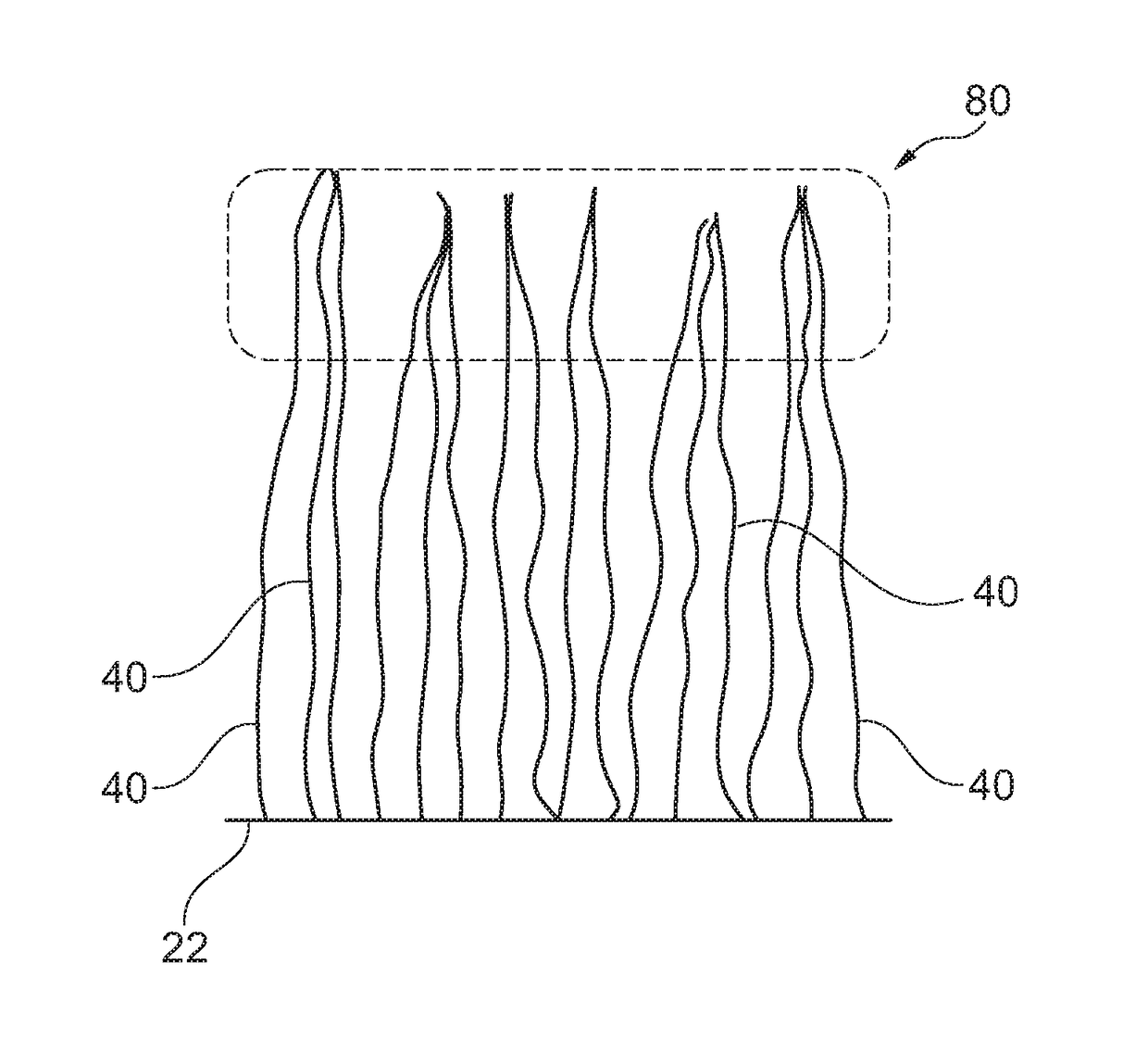Ultra low reflectivity hydrophobic coating and method therefor
a hydrophobic coating and ultra-low reflectivity technology, applied in the field of ultra-low reflectivity hydrophobic coatings, can solve the problems of faulty or lowering the performance beyond an acceptable threshold, prone to attack, and difficult to reproduce the best performance of aligned carbon nanostructure coatings with any consistency on commercial substrates, so as to reduce the reflectance
- Summary
- Abstract
- Description
- Claims
- Application Information
AI Technical Summary
Benefits of technology
Problems solved by technology
Method used
Image
Examples
example 1
[0108]Plasma deposition was conducted with a 13.56 MHz RF generator and gases were delivered via a shower head delivery system of the type disclosed and referred to above. The carbon nanotube sample was placed in the reactor and evacuated, the sample was allowed to come to temperature at 100° C. for 10 min. In one instance, CF4 (90 sccm) and C2H2 (10 sccm) were flowed into the reactor and the pressure was allowed to stabilise at 1.2 Torr. The plasma was ignited at 30 W and the reaction was allowed to proceed for between 5 and 20 seconds. The resultant sample was removed from the chamber and stored at room temperature in air for subsequent analyses.
[0109]Referring now to FIG. 8, this shows a graph of the expected coating parameters achieved by the apparatus 50 / 100 disclosed herein. Where the process has an initial step of forming an oxygen plasma to cluster, or cause to agglomerate, the free ends of the carbon nanotubes, it has been found that the optimum period for the oxygen plasma...
example 3 (
CF4-C2H2 Plasma—12 s)
[0114]A previously grown CNT forest on an aluminium coupon was loaded into a plasma chamber. The chamber is pumped down to between 10−2 and 10−3 Torr using a rotary vane pump or similar. The plasma conditions used are CF4(90)-C2H2(10), 1.2 Torr, 100° C., 30 W (0.07 W cm−2) and the plasma was sustained for 12 seconds. The sample was removed and its reflectance measured. A 25-35% drop in reflectance was observed across the spectrum as with the O2 etched sample. The sample's resistance to a drop of ultra-pure water being placed on it was assessed and it was seen to behave in a super hydrophobic manner with no wetting possible and the drops rolled away. A comparison of the two samples can be seen in FIGS. 11 and 12.
example 7
ma—300 s)
[0118]A previously grown CNT forest on aluminium foil was loaded into a plasma chamber. The chamber is pumped down to between 10−2 and 10−3 Torr using a rotary vane pump or similar. The plasma conditions used were CF4 1.2 Torr, 300° C., 30 W (0.07 Wcm−2) and the plasma was sustained for 300 seconds. The reflectance of the sample was reduced by 25-35% across the range. Following this treatment, the sample demonstrated super hydrophobic properties as evidenced in FIG. 17 and was stable over a period of several months. The improved stability is attributed to both the increased time of exposure to CFx radicals and the increased temperature.
PUM
| Property | Measurement | Unit |
|---|---|---|
| diameter | aaaaa | aaaaa |
| length | aaaaa | aaaaa |
| frequency | aaaaa | aaaaa |
Abstract
Description
Claims
Application Information
 Login to View More
Login to View More - R&D
- Intellectual Property
- Life Sciences
- Materials
- Tech Scout
- Unparalleled Data Quality
- Higher Quality Content
- 60% Fewer Hallucinations
Browse by: Latest US Patents, China's latest patents, Technical Efficacy Thesaurus, Application Domain, Technology Topic, Popular Technical Reports.
© 2025 PatSnap. All rights reserved.Legal|Privacy policy|Modern Slavery Act Transparency Statement|Sitemap|About US| Contact US: help@patsnap.com



